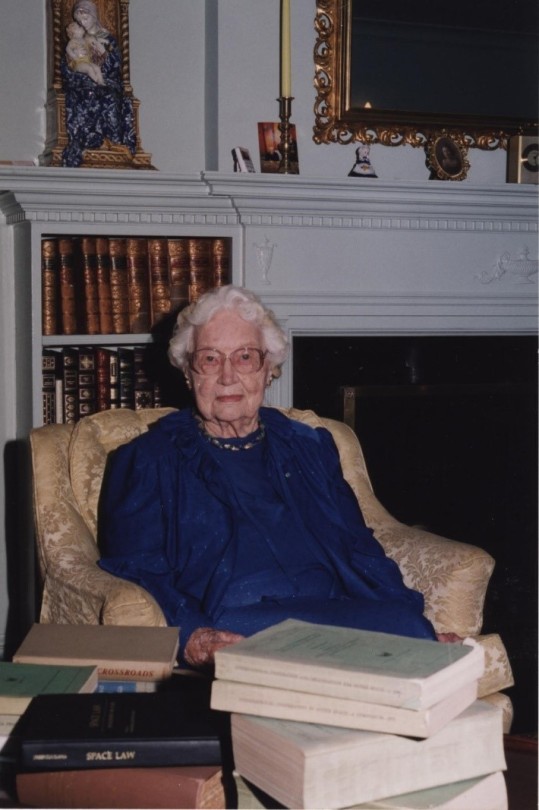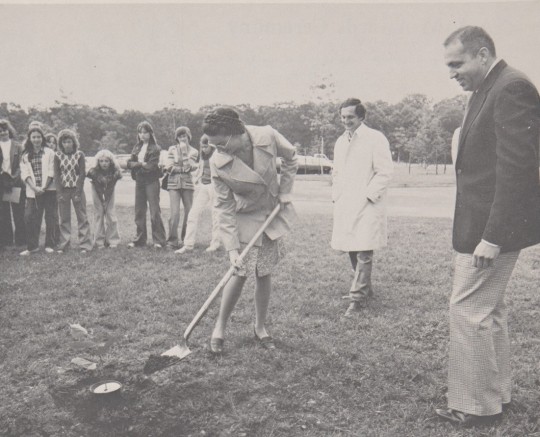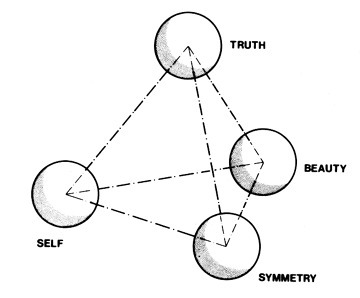#development cooperation frameworks
Explore tagged Tumblr posts
Text
The Paradox of Goodness and Inhumanity: A Rebuttal to Power
Abstract The longstanding tension between those deemed “evil” and the “good” forces opposing them hinges on a cyclical narrative of inhumanity. This article explores the ethical dimensions of retaliation, questioning the logic of asymmetric morality. Drawing on the works of Foucault, Arendt, and contemporary researchers on power dynamics, we aim to deconstruct the conceptual framework that…
#anti-corruption strategies#anti-terrorism policies#arms control#artificial intelligence regulation#asylum issues#climate adaptation strategies#climate change diplomacy#climate change migration#climate finance#climate resilience#conflict prevention strategies#conflict resolution mechanisms#cross-border cooperation#cross-border employment policy#cross-border investments#cross-border relations#cross-border supply chains#cultural diplomacy#cultural preservation#cybersecurity policies#decolonization politics#democracy promotion#democratic governance#development aid#development cooperation frameworks#developmental economics#digital diplomacy#digital governance#digital trade policies#digital transformation strategies
0 notes
Video
youtube
What Happens When Modi and Trump Make A MASSIVE New Trade Deal?
#youtube#New Defence Cooperation Framework & Trade Deal on the Horizon! Exciting developments from the Modi-Trump meeting in Washington DC! A new fr
0 notes
Text

LaRue Burbank, mathematician and computer, is just one of the many women who were instrumental to NASA missions.
4 Little Known Women Who Made Huge Contributions to NASA
Women have always played a significant role at NASA and its predecessor NACA, although for much of the agency’s history, they received neither the praise nor recognition that their contributions deserved. To celebrate Women’s History Month – and properly highlight some of the little-known women-led accomplishments of NASA’s early history – our archivists gathered the stories of four women whose work was critical to NASA’s success and paved the way for future generations.
LaRue Burbank: One of the Women Who Helped Land a Man on the Moon
LaRue Burbank was a trailblazing mathematician at NASA. Hired in 1954 at Langley Memorial Aeronautical Laboratory (now NASA’s Langley Research Center), she, like many other young women at NACA, the predecessor to NASA, had a bachelor's degree in mathematics. But unlike most, she also had a physics degree. For the next four years, she worked as a "human computer," conducting complex data analyses for engineers using calculators, slide rules, and other instruments. After NASA's founding, she continued this vital work for Project Mercury.
In 1962, she transferred to the newly established Manned Spacecraft Center (now NASA’s Johnson Space Center) in Houston, becoming one of the few female professionals and managers there. Her expertise in electronics engineering led her to develop critical display systems used by flight controllers in Mission Control to monitor spacecraft during missions. Her work on the Apollo missions was vital to achieving President Kennedy's goal of landing a man on the Moon.
Eilene Galloway: How NASA became… NASA

Eilene Galloway wasn't a NASA employee, but she played a huge role in its very creation. In 1957, after the Soviet Union launched Sputnik, Senator Richard Russell Jr. called on Galloway, an expert on the Atomic Energy Act, to write a report on the U.S. response to the space race. Initially, legislators aimed to essentially re-write the Atomic Energy Act to handle the U.S. space goals. However, Galloway argued that the existing military framework wouldn't suffice – a new agency was needed to oversee both military and civilian aspects of space exploration. This included not just defense, but also meteorology, communications, and international cooperation.
Her work on the National Aeronautics and Space Act ensured NASA had the power to accomplish all these goals, without limitations from the Department of Defense or restrictions on international agreements. Galloway is even to thank for the name "National Aeronautics and Space Administration", as initially NASA was to be called “National Aeronautics and Space Agency” which was deemed to not carry enough weight and status for the wide-ranging role that NASA was to fill.
Barbara Scott: The “Star Trek Nerd” Who Led Our Understanding of the Stars

A self-described "Star Trek nerd," Barbara Scott's passion for space wasn't steered toward engineering by her guidance counselor. But that didn't stop her! Fueled by her love of math and computer science, she landed at Goddard Spaceflight Center in 1977. One of the first women working on flight software, Barbara's coding skills became instrumental on missions like the International Ultraviolet Explorer (IUE) and the Thermal Canister Experiment on the Space Shuttle's STS-3. For the final decade of her impressive career, Scott managed the flight software for the iconic Hubble Space Telescope, a testament to her dedication to space exploration.
Dr. Claire Parkinson: An Early Pioneer in Climate Science Whose Work is Still Saving Lives

Dr. Claire Parkinson's love of math blossomed into a passion for climate science. Inspired by the Moon landing, and the fight for civil rights, she pursued a graduate degree in climatology. In 1978, her talents landed her at Goddard, where she continued her research on sea ice modeling. But Parkinson's impact goes beyond theory. She began analyzing satellite data, leading to a groundbreaking discovery: a decline in Arctic sea ice coverage between 1973 and 1987. This critical finding caught the attention of Senator Al Gore, highlighting the urgency of climate change.
Parkinson's leadership extended beyond research. As Project Scientist for the Aqua satellite, she championed making its data freely available. This real-time information has benefitted countless projects, from wildfire management to weather forecasting, even aiding in monitoring the COVID-19 pandemic. Parkinson's dedication to understanding sea ice patterns and the impact of climate change continues to be a valuable resource for our planet.
Make sure to follow us on Tumblr for your regular dose of space!
#NASA#space#tech#technology#womens history month#women in STEM#math#climate science#computer science
2K notes
·
View notes
Text

Workshop Update: Kaidan Revoiced - Community Expansion 1.0 Launch!
After two years of development, the Kaidan Workshop Staff is proud to present Kaidan Revoiced - Community Expansion (KRCE)!
First and foremost, none of this would be possible without livtempleton graciously giving us permission for our project! Throughout the years, the assets she's allowed the Skyrim modding community to build upon has kept Kaidan alive in thousands of modlists, providing the opportunity for even more players to enjoy her original creations; we're very honored to be added to the list of modders whose creations are inspired by her work. When we started the Workshop, we had no idea if anyone would even notice our project; a new voice actor, a new iteration of an already established character, and no product to show for it in advance. The only thing we could offer the general public at the time was the promise of transparency and community cooperation throughout the process. So we created a budget for revoicing Kaidan, a plan for community involvement, and hit the ground running. We added new staff, taught ourselves new skills as the scope of the project evolved, and leaned on the advice, ideas, and encouragement from our community. Alongside the (mostly) monthly updates on our Tumblr and taking suggestions from our 'I Had An Idea!' Discord channel, our methods for ensuring transparency during development evolved; our Community Team began hosting public meetings via our Discord to discuss our current workflow, answer questions, and conduct live script readings of our original scripts, to ensure that our Writing Team was matching the original tone set by livtempleton. We also streamed our beta footage on Twitch, trying our best to stress test the new framework built by our Creation Kit Team while also taking more suggestions from our audience for future content. Finally, we were incredibly pleased to be able to host an Open Beta for KRCE this past October & November for our Discord community, as a special thank you for their support. We were able to get some excellent feedback on some of our new follower features, as well as hunt down any missed audio or errors our internal testing missed. All in all, it took many, many people to bring this mod to life, and our Staff is incredibly humbled and grateful for the support of everyone involved. While this 1.0 version will be available indefinitely for those who prefer it, the Workshop Staff is very excited to begin creating more original content moving forward into 2025! One of our original scripts for the Daedric quest "Pieces of the Past" is in the 1.0, so you can check it out to get a sense of the tone our writers are going for! You can read about what content is present in our mod, as well as find the answers to commonly asked questions in the KRCE Mod FAQ. Keep up with the project via our updates on Tumblr, or join our Discord server!
The Kaidan Workshop is a community-led, non-profit project that aims to build upon the original LivTempleton Kaidan 2 mod. Our project is strictly non-profit; all funds raised are to commission Mr. Warren for his services. You can read more about what the Kaidan Workshop is here.
#kaidan 2#kaidanworkshop#custom voice follower skyrim#kaidan skyrim#skyrim kaidan#elder scrolls skyrim#custom voiced follower
330 notes
·
View notes
Text
Writing Notes: The Five-Factor Model of Personality
Culture is transmitted to people through language, as well as through social norms which establish acceptable and unacceptable behaviors which are then rewarded or punished (Henrich, 2016; Triandis & Suh, 2002).
With an increased understanding of cultural learning, psychologists have become interested in the role of culture in understanding personality.
The 5 Personality Traits According to this Model
OPENNESS TO EXPERIENCE
Refers to a person's imagination, feelings, actions, ideas
LOW score: More likely to be practical, conventional, prefer routine
HIGH score: More likely to be curious, have a wide range of interests, be independent
CONSCIENTIOUSNESS
Competence, self-discipline, thoughtfulness, goal-driven
LOW: Impulsive, careless, disorganized
HIGH: Hardworking, dependable, organized
EXTROVERSION
Sociability, assertiveness, emotional expression
LOW: Quiet, reserved, withdrawn
HIGH: Outgoing, warm, seeks adventure
AGREEABLENESS
Cooperative, trustworthy, good-natured
LOW: Critical, uncooperative, suspicious
HIGH: Helpful, trusting, empathetic
NEUROTICISM
Tendency toward unstable emotions
LOW: Calm, even-tempered, secure
HIGH: Anxious, unhappy, prone to negative emotions
Applicability
The idea that personality can be described and explained by five traits (OCEAN) has important implications, as does the fact that most personality tests were constructed and initially tested in Western countries.
Western ideas about personality may not apply to other cultures (Benet-Martinez & Oishi, 2008).
2 Main Cultural Approaches for Researching Personality
Etic traits - considered universal constructs that are evident across cultures and represent a biological bases of human personality. If the Big Five are universal then they should appear across all cultures (McCrae and Allik, 2002).
Emic traits - constructs unique to each culture and are determined by local customs, thoughts, beliefs, and characteristics. If personality traits are unique to individual cultures then different traits should appear in different cultures.
Using an Etic Framework
Cross cultural research of personality uses an etic framework and researchers must ensure equivalence of the personality test through validation testing.
The instrument must include equivalence in meaning, as well as demonstrate validity and reliability (Matsumoto & Luang, 2013).
Example: The phrase feeling blue is used to describe sadness in Westernized cultures but does not translate to other languages.
Differences in personality across cultures could be due to real cultural differences, but they could also be consequences of poor translations, biased sampling, or differences in response styles across cultures (Schmitt, Allik, McCrae, & Benet-Martínez, 2007).
Personality Test/Measure Used: The NEO-PI
Most of the cross-cultural research on the Five-Factor Model (FFM) and Big Five (OCEAN) has been done using the NEO-PI (and its subsequent revisions; i.e., it is an assessment tool developed to measure the 5 dimensions of personality according to the FFM) which has demonstrated equivalence, reliability and validity across several cross-cultural studies (Costa & McCrae, 1987; McCrae, Costa & Martin, 2005).
Research using the NEO-PI found support for the entire Five-Factor Model in Chinese, Dutch, Italian, Hungarian, German, Australian, South African, Canadian, Finnish, Polish, Portuguese, Israeli, Korean, Japanese, and Filipino samples, in addition to other samples (McCrae, Costa, Del Pilar, Rolland, & Parker, 1998).
NOTE
Personality tests rely on self-report which is susceptible to response bias like socially desirability responding.
To evaluate this possibility, McCrae and colleagues (2005) recruited students from 50 cultural groups and modified the NEO-PI to be in the third person (i.e., he, she, his, her):
The research participants were asked to complete the form on someone else that they knew very well (McCrae et al., 2005).
The same 5 factors emerged in this study.
These results provided empirical support for the FFM and for the use of self-report instruments when conducting cross-cultural personality research.
There was no reason for the students to respond in a desirable way because they were answering questions about someone else.

Sources: 1 2 ⚜ Writing Notes & References
#writing notes#personality#psychology#culture#writeblr#character development#spilled ink#dark academia#langblr#studyblr#writing reference#literature#writers on tumblr#writing prompt#poetry#poets on tumblr#writing inspiration#writing ideas#writing inspo#creative writing#fiction#character building#light academia#research#writing resources
184 notes
·
View notes
Text
Aspects of Saturn in the Natal Chart

☌ Saturn Conjunct Other Planets
Conjunctions can be both positive and negative. On the positive side, they combine the energies of the planets involved, enhancing their qualities and creating a powerful synergy. This can result in heightened strengths and abilities in the areas governed by the conjunct planets. On the negative side, conjunctions can amplify challenging traits, potentially leading to imbalances or conflicts if the combined energies are not well-integrated or harmonized.
Saturn Conjunct Sun
Saturn conjunct Sun brings a strong sense of responsibility and discipline. You are practical and ambitious, often striving for long-term goals with perseverance. This aspect enhances your ability to overcome obstacles and achieve success through hard work and dedication. It encourages you to develop a mature and realistic approach to life.
Saturn Conjunct Moon
Saturn conjunct Moon fosters emotional resilience and stability. You may experience challenges in expressing your emotions, but this aspect helps you build inner strength. It encourages you to face emotional difficulties with patience and discipline, ultimately leading to emotional maturity and a strong sense of self-reliance.
Saturn Conjunct Mercury
Saturn conjunct Mercury enhances your focus and analytical abilities. You are disciplined in your thinking and communication, often preferring structured and logical approaches. This aspect encourages you to develop patience and precision in your intellectual pursuits, leading to success through careful planning and diligent effort.
Saturn Conjunct Venus
Saturn conjunct Venus brings a serious and committed approach to relationships and finances. You value stability and responsibility in love and material matters. This aspect encourages you to develop lasting and meaningful connections through patience and effort, while also fostering a disciplined approach to financial security.
Saturn Conjunct Mars
Saturn conjunct Mars combines ambition with discipline. You are determined and persistent in pursuing your goals, often facing challenges with resilience. This aspect encourages you to channel your energy and drive in a focused and strategic manner, leading to long-term success through hard work and perseverance.
Saturn Conjunct Jupiter
Saturn conjunct Jupiter blends optimism with practicality. You balance expansive visions with disciplined effort, fostering steady growth. This aspect supports long-term success through strategic planning and perseverance, helping you achieve your ambitions with a practical approach.
Saturn Conjunct Uranus
Saturn conjunct Uranus blends tradition with innovation. You have a unique ability to balance structure with a desire for change. This aspect encourages you to integrate new ideas within established frameworks, leading to breakthroughs and progress through disciplined creativity.
Saturn Conjunct Neptune
Saturn conjunct Neptune combines realism with idealism. You have the ability to bring your dreams into reality through disciplined effort. This aspect encourages you to pursue your spiritual and creative goals with practicality and perseverance, fostering a grounded approach to your aspirations.
Saturn Conjunct Pluto
Saturn conjunct Pluto brings transformative power to your ambitions. You pursue your goals with intensity and depth, often facing profound challenges. This aspect encourages you to harness your inner strength and resilience to achieve significant personal and professional transformations.
⚹ Saturn Sextile Other Planets
Sextiles are positive aspects that encourage cooperation and the easy flow of energies between the involved planets. This harmonious connection facilitates smooth interactions and enhances the beneficial qualities of each planet, leading to supportive and constructive outcomes. The ease of this aspect promotes opportunities for growth, creativity, and positive developments in the areas influenced by the sextile.
Saturn Sextile Sun
Saturn sextile Sun supports your ambition with discipline and practicality. You are focused and determined, attracting opportunities for steady progress. This aspect encourages you to pursue your goals with a realistic and strategic approach, leading to long-term success through consistent effort.
Saturn Sextile Moon
Saturn sextile Moon brings emotional stability and resilience. You are able to handle emotional challenges with patience and discipline. This aspect encourages you to develop a mature and realistic approach to your emotions, fostering inner strength and emotional growth.
Saturn Sextile Mercury
Saturn sextile Mercury enhances your analytical and communication skills. You are disciplined in your thinking and prefer structured approaches to problem-solving. This aspect supports intellectual growth and success through careful planning and diligent effort in your pursuits.
Saturn Sextile Venus
Saturn sextile Venus brings opportunities for stable and committed relationships. You value responsibility and loyalty in love and material matters. This aspect encourages you to build lasting connections and achieve financial security through patience and disciplined effort.
Saturn Sextile Mars
Saturn sextile Mars provides opportunities for focused and strategic action. You are determined and persistent in pursuing your goals. This aspect supports your ambitions by encouraging you to channel your energy and drive in a disciplined manner, leading to long-term success.
Saturn Sextile Jupiter
Saturn sextile Jupiter blends growth with discipline. You attract opportunities through strategic planning and perseverance. This aspect supports steady progress and long-term success, helping you balance optimism with practical efforts to achieve your ambitions.
Saturn Sextile Uranus
Saturn sextile Uranus offers chances to integrate innovation within established frameworks. You balance tradition with a desire for change, attracting opportunities for breakthroughs. This aspect encourages disciplined creativity and progress through a strategic approach to new ideas.
Saturn Sextile Neptune
Saturn sextile Neptune enhances your ability to bring dreams into reality. You combine realism with idealism, pursuing your spiritual and creative goals with practicality. This aspect supports the manifestation of your aspirations through disciplined effort and a grounded approach.
Saturn Sextile Pluto
Saturn sextile Pluto brings transformative opportunities through disciplined effort. You approach your goals with intensity and depth, often achieving profound changes. This aspect encourages harnessing your inner strength and resilience to achieve significant personal and professional transformations.
□ Saturn Square Other Planets
Squares are negative aspects that create tension and challenges between the involved planets, prompting growth through conflict. This dynamic aspect often leads to struggles and obstacles that need to be overcome, pushing individuals to address and resolve the underlying issues. The friction generated by squares can be difficult to navigate, but it ultimately encourages personal development and resilience as one learns to balance and harmonize the conflicting energies.
Saturn Square Sun
Saturn square Sun creates tension between your ambitions and practical limitations. You may face challenges in balancing your goals with realistic efforts. This aspect encourages learning patience and perseverance, helping you overcome obstacles through disciplined and strategic planning.
Saturn Square Moon
Saturn square Moon can lead to emotional difficulties and feelings of restriction. You may struggle with expressing your emotions, but this aspect encourages developing emotional resilience and maturity. Learning patience and discipline helps you navigate emotional challenges.
Saturn Square Mercury
Saturn square Mercury may lead to challenges in communication and thinking. You might struggle with balancing your analytical abilities with practical considerations. This aspect encourages developing patience and precision in your intellectual pursuits, fostering growth through disciplined effort.
Saturn Square Venus
Saturn square Venus can result in challenges in relationships and finances. You may face difficulties in balancing your desires with practical needs. This aspect encourages learning patience and responsibility, fostering stable and committed connections through disciplined effort.
Saturn Square Mars
Saturn square Mars can create tension between your ambition and practical limitations. You may face challenges in balancing your drive with realistic efforts. This aspect encourages developing patience and strategic planning, helping you achieve long-term success through disciplined action.
Saturn Square Jupiter
Saturn square Jupiter creates tension between your expansive visions and practical realities. You may struggle with balancing optimism with realistic efforts. This aspect encourages learning patience and refining your approach, fostering long-term success through disciplined planning.
Saturn Square Uranus
Saturn square Uranus can bring challenges in balancing tradition with innovation. You may face disruptions and conflicts between established structures and new ideas. This aspect encourages developing patience and adaptability, fostering progress through a disciplined approach to change.
Saturn Square Neptune
Saturn square Neptune can lead to confusion and challenges in balancing dreams with practical goals. You may struggle with unrealistic expectations and idealistic pursuits. This aspect encourages finding clarity and realism in your pursuits, fostering growth through disciplined effort.
Saturn Square Pluto
Saturn square Pluto can create intense challenges and power struggles. You may face obstacles in achieving your ambitions due to conflicting desires and practical limitations. This aspect encourages transforming your approach and harnessing inner strength to overcome significant challenges and achieve growth.
△ Saturn Trine Other Planets
Trines are positive aspects that create a smooth and beneficial connection between the involved planets, enhancing talents and creating a sense of ease. This harmonious aspect facilitates the natural flow of energy, making it easier to express and develop the qualities associated with the planets. Trines often lead to emotional balance, inner harmony, and an overall sense of well-being, as the supportive nature of this aspect encourages the effortless integration of strengths and abilities.
Saturn Trine Sun
Saturn trine Sun brings a harmonious balance between ambition and discipline. You are focused and determined, often achieving success through steady and consistent effort. This aspect supports long-term goals and encourages a realistic and practical approach to your pursuits.
Saturn Trine Moon
Saturn trine Moon enhances your emotional stability and resilience. You handle emotional challenges with patience and maturity. This aspect supports a realistic and disciplined approach to your emotions, fostering inner strength and emotional growth.
Saturn Trine Mercury
Saturn trine Mercury boosts your analytical and communication abilities. You approach problem-solving with discipline and precision. This aspect supports intellectual growth and success through careful planning and a structured approach to your pursuits.
Saturn Trine Venus
Saturn trine Venus brings stability and commitment to your relationships and finances. You value responsibility and loyalty in love and material matters. This aspect supports building lasting connections and achieving financial security through disciplined effort and patience.
Saturn Trine Mars
Saturn trine Mars enhances your ambition and determination. You pursue your goals with focus and persistence, often achieving success through strategic actions. This aspect supports your ambitions by encouraging a disciplined and practical approach to your endeavors.
Saturn Trine Jupiter
Saturn trine Jupiter balances growth with discipline. You approach your ambitions with a realistic and optimistic mindset, supporting steady progress. This aspect fosters long-term success through strategic planning and perseverance, blending visionary goals with practical efforts.
Saturn Trine Uranus
Saturn trine Uranus enhances your ability to balance tradition with innovation. You integrate new ideas within established frameworks, leading to progress and breakthroughs. This aspect supports disciplined creativity and a strategic approach to embracing change.
Saturn Trine Neptune
Saturn trine Neptune boosts your ability to bring dreams into reality. You combine realism with idealism, pursuing your spiritual and creative goals with practicality. This aspect supports the manifestation of your aspirations through disciplined effort and a grounded approach.
Saturn Trine Pluto
Saturn trine Pluto brings transformative power to your ambitions. You pursue your goals with intensity and depth, often achieving profound changes. This aspect encourages harnessing your inner strength and resilience to achieve significant personal and professional transformations.
☍ Saturn Opposition Other Planets
Oppositions in astrology create a dynamic of tension and awareness between the energies of the planets involved. This aspect often highlights contrasting needs and urges individuals to find a balance between them. While oppositions can create challenges, they also provide opportunities for growth and integration as one learns to navigate the tension between opposing forces.
Saturn Opposite Sun
Saturn opposite Sun creates tension between your ambitions and practical realities. You may face challenges due to conflicting desires and limitations. Finding balance between your goals and realistic efforts is key, encouraging growth through learning from experiences and adapting your approach.
Saturn Opposite Moon
Saturn opposite Moon can create tension between emotional needs and practical considerations. You may face challenges in balancing your emotions with realistic expectations. This aspect encourages developing emotional resilience and maturity, fostering growth through disciplined effort.
Saturn Opposite Mercury
Saturn opposite Mercury can lead to conflicts between your analytical abilities and practical thinking. You may struggle with balancing your intellect with realistic considerations. This aspect encourages finding clarity and developing patience in your communication and intellectual pursuits.
Saturn Opposite Venus
Saturn opposite Venus creates tension between your desires and practical needs. You may face challenges in balancing relationships and material matters. This aspect encourages learning patience and responsibility, fostering stable and committed connections through disciplined effort.
Saturn Opposite Mars
Saturn opposite Mars can lead to conflicts between your ambition and practical limitations. You may struggle with balancing your drive with realistic efforts. This aspect encourages developing patience and strategic planning, helping you achieve long-term success through disciplined action.
Saturn Opposite Jupiter
Saturn opposite Jupiter creates tension between your expansive visions and practical realities. You may struggle with balancing optimism and realistic efforts. This aspect encourages learning patience and refining your approach, fostering long-term success through disciplined planning.
Saturn Opposite Uranus
Saturn opposite Uranus can bring tension between tradition and innovation. You may face conflicts between established structures and new ideas. This aspect encourages finding balance between stability and change, fostering growth through disciplined adaptability.
Saturn Opposite Neptune
Saturn opposite Neptune creates tension between your ideals and practical goals. You may struggle with balancing dreams and realistic efforts. This aspect encourages finding clarity and realism in your pursuits, fostering growth through disciplined effort and a grounded approach.
Saturn Opposite Pluto
Saturn opposite Pluto can bring intense challenges and power struggles. You may face obstacles in achieving your ambitions due to conflicting desires and practical limitations. This aspect encourages transforming your approach and harnessing inner strength to overcome significant challenges and achieve growth.
©️kleopatra45
#astrology#astrology community#astroblr#astrology readings#astro notes#astrology observations#astrology tumblr#houses in astrology#saturn in astrology#saturn
184 notes
·
View notes
Note
I beg you to try engaging with this in good faith, bc i respect and agree with basically all your other opinions and id like us to come to a mutual understanding on this.
Like yeah the average terf(JK Rowling types and similar) that cooperates with the largely cis male far right definitely doesn't hate men, but it's obvious that many do. Idk why you're insisting otherwise, when that just pushes men (both cis and trans) away, when they could be your allies in all this.
Many terfs absolutely do hate cis men, that's pretty obvious and i don't think oversimplifying that as not true is useful in any way. Like, terfs aren't a homogeneous group, they differ wildly in opinion and strategy.
It's just, harming cis men as a group is nowhere near their(man hating terfs) capabilities so they instead focus on trans women.
Like for men, especially trans ones, having someone hate you, dehumanize you and insist you're intrinsically evil and violent, feels quite bad.
And when trans women deny that that's happening, that pointlessly creates conflict where none is needed.
This isn't about "leaving trans men out" or trying to figure out who the biggest victim is. This happened with discussion about bathroom bills as well.
Saying that TERFs are fundamentally misogynist is NOT an attempt to say that other people aren't harmed by them.
What I AM doing is trying to give people a better framework for how TERFs think, and how their rhetoric is so effective in a misogynist society. Eg, why are so many hard-right, openly misogynist figures repeating things that TERFs say and implementing them into law? Because TERF rhetoric has the same core. Acknowledging this isn't about oppression Olympics, it's about unpacking how TERF mentalities develop, and where they latch on. That's why I'm "so insistent" about this.
Are trans men hurt by this? Yes. I've read Irreversible Damage, I've seen what they say about y'all both there and in other places.
The primary motivator behind TERF hate, however, is still misogyny.
It's the bathroom discussion all over again. A trans man was recently arrested in a bathroom. A woman's bathroom. He got permission, but it didn't matter. Women's bathrooms are the ones policed, women's bathrooms are the ones that legal and police enforcement are used to enforce fear in.
Quite frankly, this is a dishonest reading of what I'm saying. Never in the meme did I even mention who TERFs hurt. It's about explaining what's going on inside their heads, and how that affects the world. I'm not creating nor starting conflict, and this is a very light take that shouldn't be shoving people away.
37 notes
·
View notes
Text













Nomata Minoru / Continuum
Joseph Constable, Nomura Shino
Cooperation White Cube
limArt Co Ltd, Tokyo 2023, 182 pages, 22,5x28,5cm, ISBN 978-4-991313806
euro 52,00
email if you want to buy [email protected]
Over the past four decades, Minoru Nomata has developed a lexicon of imaginary architectonic and topographical forms to create paintings that transcend specifics of time and place. This book presents a grand overview of his visionary works, which combine the familiar with the mysterious and the heroic with the haunting. It is especially the forms of construction – structural beams, frameworks, tarpaulins, and netting – that are the hallmarks of these fantastical architectures. Notions of the picturesque and sublime combine in Nomata’s later paintings, where the structures seem increasingly fragile, with reduced material volume, greater height, or wrapped in tendril-like scaffolding.
20/02/24
#Minoru Namata#imaginary architectonic#topographical forms#art books#japanese artist#lim Art publisher#designbooksmilano#fashionbooksmilano
315 notes
·
View notes
Text
This isn’t an exhaustive list, but I’ve run into some of these organizations as places to donate, and it's fine for my followers to share other lists that have gone around. (I'm not going to be offended.) This is version three with some organizations that include long-term goals of Israeli-Palestinian cooperation and peace in addition to the initial organizations offering emergency aid. Organizations are listed alphabetically.
Alliance for Middle East Peace
ALLMEP is a coalition of over 160 organizations—and hundreds of thousands of Palestinians and Israelis—building cooperation, justice, equality, shared society, mutual understanding, and peace among their communities. We add stability in times of crisis, foster cooperation that increases impact, and build an environment conducive to peace over the long term. (Even if you're not really keen on supporting AllMEP itself, searching Member Organizations may also be a way to find organizations based on sectors - environment, women, youth, etc. - or type - Palestinian, Cross Border, or Shared Society.)
American Friends of Magen David Adom
The most common way I’ve seen recommendations for USAmericans to donate to Magen David Adom. (Additional Friends Societies are on Magen David Adom’s site for other countries.)
As a fully-fledged member of the International Red Cross / Red Crescent, Magen David Adom serves as the Israeli Red Cross organization.
Anera
Anera, which has no political or religious affiliation, works on the ground with partners in Palestine (West Bank and Gaza), Lebanon and Jordan. We mobilize resources for immediate emergency relief and for sustainable, long-term health, education, and economic development. Our staff serve in their communities, navigating the politics that constrict progress to get help where it’s needed most.
A Land For All
A Land for All is a shared movement of Israelis and Palestinians who believe that the way towards peace, security and stability for all passes through two independent states, Israel and Palestine, within a joint framework allowing both peoples to live together and apart.
Doctors Without Border/Médecins Sans Frontières (MSF)
An independent organization “focused on delivering emergency medical humanitarian aid quickly, effectively, and impartially.” This link goes to the Palestinian Territories section.
Friends of Roots
We are a network of local Palestinians and Israelis [in the West Bank] who have come to see each other as the partners we both need to make changes to end our conflict. Based on a mutual recognition of each People's connection to the Land, we are developing understanding and solidarity despite our ideological differences. Ongoing Initiatives include interreligious exchange, a women's group, partnership lectures, a children's summer camp, youth group, after school program, incident response team, and community de-escalators.
Hand in Hand
Hand in Hand is building inclusion and equality between Arab and Jewish citizens of Israel through a growing network of bilingual, integrated schools and communities. [...] The curricula in Hand in Hand’s schools are based on values that reflect both cultures and languages, oriented in multiculturalism and shared and equal citizenship. In our bilingual educational model, Hebrew and Arabic have equal status, as do both cultures and national narratives. Our thousands-strong adult community members come together year-round in celebration, solidarity, and dialogue. These community activities are geared towards parents, staff, and other active citizens who are interested in taking part in a shared community. We believe it is not apt to place the burden of creating a shared future on the shoulders of our children. We, the adults, must lead the way. These community activities are an inseparable part of our work towards building a shared society.
MAUSA - Muslim Aid USA
An international charity that provides assistance from natural disasters and conflict. They have a specific Palestine Emergency page.
Mrs Najah’s Kitchen
Emergency food relief in Gaza.
Off The Grid Missions
Off-The-Grid Missions (OTG) is a global humanitarian aid organization filling the gap in disaster-response by providing Deaf and Hard-of-Hearing people with critical life-saving resources in high-risk and disaster-stricken regions around the world.
Depending on the mission, aid can include assistance with evacuations, providing food, solar lighting and emergency electric sources, and assisting with alternatives to sound based warning systems. (Assistance with Deaf and Hard-of-hearing individuals in Palestine and Israel has been mentioned on quickly updated social media sites, like Facebook.)
Palestine Red Crescent Society
The Palestine Red Crescent Society (PRCS) is an officially recognized independent Palestinian National Society. It is part of the International Red Cross and Red Crescent Movement.
Standing Together
Standing Together is a grassroots movement mobilizing Jewish and Palestinian citizens of Israel in pursuit of peace, equality, and social and climate justice. We organize protests across the country demanding economic equality, climate justice, and an end to the occupation. We hold workshops on grassroots power, organize get-out-the-vote campaigns, and run candidates for student union elections [related to university chapters]. Our alternative media outlet, Rosa Media, produces Hebrew and Arabic podcasts highlighting underrepresented political stories and perspectives from across Israeli society. We maintain a robust presence in Israeli social media – combatting extremist voices and advancing hope.
Women Wage Peace
Women Wage Peace is a broad, politically unaffiliated movement, which is acting to prevent the next war and to promote a non-violent, respectful, and mutually accepted solution to the Israeli-Palestinian conflict, with the active participation of women through all stages of negotiations.
World Central Kitchen
World Central Kitchen is first to the frontlines, providing meals in response to humanitarian, climate, and community crises.
They have response teams and partners in Gaza, Israel, Lebanon, and Egypt.
Charity Navigator page for additional organizations for the Israel-Hamas conflict.
Posted: 5 February 2024. (Link to Version 2.)
292 notes
·
View notes
Text
South Korea and Poland have signed a cooperation agreement as the democratic allies find themselves united in their security concerns despite the vast geographical distance between them
ByVANESSA GERA Associated Press
March 5, 2025, 8:44 AM
WARSAW, Poland -- South Korea and Poland signed a cooperation agreement on Wednesday as the democratic allies increasingly find themselves united by concerns about the global security situation despite the vast geographical distance between them.
Foreign ministers Cho Tae-yul of South Korea and Poland's Radek Sikorski signed an action plan which outlines their relations in the areas of politics, economy, defense and culture through 2028.
“We both reaffirmed that there is a need to further strengthen our cooperation for transregional security cooperation, encompassing both Europe and the Indo-Pacific within the framework of the NATO-IP4 partnership," said Cho, referring to NATO's partnership with allies in the Indo-Pacific region, South Korea, Japan, Australia and New Zealand.
South Korea and Poland have been strategic partners since 2013, with South Korea in recent years becoming a major supplier of weapons as NATO member Poland carries out a massive investment program to modernize its armed forces.
“Poland is the largest recipient of Korean military equipment worldwide, and we would like to further develop this cooperation with the prospect of relocating production and technology transfer to Poland,” Sikorski told reporters. “Poland can also serve as a hub for further promotion of Korean military equipment in Europe and for the rebuilding of Ukraine.”
The two nations share concerns about the situation in Ukraine, which lies on Poland’s eastern border and has sent jitters across NATO’s eastern flank.
South Korea and Poland, along with other European allies, have also been concerned about North Korea ’s support for Russia in the war, including its dispatch of North Korean soldiers to fight alongside the Russians. Seoul worries that Russia could reward North Korea with transfers of sensitive technology to enhance its nuclear and missile programs.
45 notes
·
View notes
Text
The Witcher 4 Tech Demo Debuts

youtube
CD PROJEKT RED and Epic Games Present The Witcher 4 Unreal Engine 5 Tech Demo at The State of Unreal 2025!
At Unreal Fest Orlando, the State of Unreal keynote opened with a live on-stage presentation that offered an early glimpse into the latest Unreal Engine 5 features bringing the open world of The Witcher 4 to life.
Spotlight:
Tech demo showcased how the CD PROJEKT RED and Epic Games are working together to power the world of The Witcher 4 on PC, PlayStation, and Xbox, and bring large open-world support to Unreal Engine. The tech demo takes place in the never-before-seen region of Kovir.
As Unreal Fest 2025 kicked off, CD PROJEKT RED joined Epic Games on stage to present a tech demo of The Witcher 4 in Unreal Engine 5 (UE5). Presented in typical CDPR style, the tech demo follows the main protagonist Ciri in the midst of a monster contract and shows off some of the innovative UE5 technology and features that will power the game’s open world.
The tech demo takes place in the region of Kovir — which will make its very first appearance in the video game series in The Witcher 4. The presentation followed main protagonist Ciri — along with her horse Kelpie — as she made her way through the rugged mountains and dense forests of Kovir to the bustling port town of Valdrest. Along the way, CD PROJEKT RED and Epic Games dove deep into how each feature is helping drive performance, visual fidelity, and shape The Witcher 4’s immersive open world.
Watch the full presentation from Unreal Fest 2025 now at LINK.
Since the strategic partnership was announced in 2022, CDPR has been working with Epic Games to develop new tools and enhance existing features in Unreal Engine 5 to expand the engine’s open-world development capabilities and establish robust tools geared toward CD PROJEKT RED’s open-world design philosophies. The demo, which runs on a PlayStation 5 at 60 frames per second, shows off in-engine capabilities set in the world of The Witcher 4, including the new Unreal Animation Framework, Nanite Foliage rendering, MetaHuman technology with Mass AI crowd scaling, and more. The tools showcased are being developed, tested, and eventually released to all UE developers, starting with today’s Unreal Engine 5.6 release. This will help other studios create believable and immersive open-world environments that deliver performance at 60 FPS without compromising on quality — even at vast scales. While the presentation was running on a PlayStation console, the features and technology will be supported across all platforms the game will launch on.
The Unreal Animation Framework powers realistic character movements in busy scenes. FastGeo Streaming, developed in collaboration with Epic Games, allows environments to load quickly and smoothly. Nanite Foliage fills forests and fields with dense detail without sacrificing performance. The Mass system handles large, dynamic crowds with ease, while ML Deformer adds subtle, realistic touches to character animation — right down to muscle movement.
Speaking on The Witcher 4 Unreal Engine 5 tech demo, Joint-CEO of CD PROJEKT RED,
Michał Nowakowski stated:
“We started our partnership with Epic Games to push open-world game technology forward. To show this early look at the work we’ve been doing using Unreal Engine running at 60 FPS on PlayStation 5, is a significant milestone — and a testament of the great cooperation between our teams. But we're far from finished. I look forward to seeing more advancements and inspiring technology from this partnership as development of The Witcher 4 on Unreal Engine 5 continues.”
Tim Sweeney, Founder and CEO of Epic Games said:
“CD PROJEKT RED is one of the industry’s best open-world game studios, and we’re grateful that they’re working with us to push Unreal Engine forward with The Witcher 4. They are the perfect partner to help us develop new world-building features that we can share with all Unreal Engine developers.”
For more information on The Witcher 4, please visit the official website. More information about The Witcher series can be found on the official official website, X, Bluesky, and Facebook.




#the witcher#the witcher 4#cd projekt red#video games#gaming#gaming news#screenshtos#unreal engine#unreal engine 5#UE5#game development#tech demo#game design#Youtube
24 notes
·
View notes
Text


The Role of Black Women in Garveyism and Pan-Africanism: A Garveyite Perspective on Leadership, Resistance, and Nation-Building
Black women have been the backbone of Garveyism and Pan-Africanism, yet their contributions are often overlooked in mainstream historical narratives. From a Garveyite perspective, Black women were not just supporters but leaders, strategists, and nation-builders who played essential roles in the fight for Black self-determination, economic independence, and global unity.
Marcus Garvey and the Universal Negro Improvement Association (UNIA) recognized the indispensable role of Black women in advancing the movement, challenging the notion that only men were the architects of Pan-Africanism. Women were at the forefront as organizers, educators, business leaders, and freedom fighters, proving that the struggle for Black liberation required the full participation of both men and women.
This analysis will explore:
The leadership of Black women in Garveyism and Pan-Africanism.
The role of Black women in the UNIA and their contributions to economic empowerment.
How Black women shaped political and intellectual aspects of Pan-Africanism.
The challenges and erasure of Black women’s contributions in the movement.
How Garveyism provides a framework for true gender equality in Black liberation.
1. Black Women as Leaders in Garveyism: The Backbone of the Movement
A. Amy Ashwood Garvey: Co-Founder of the UNIA and Women's Rights Advocate
Amy Ashwood Garvey was a Pan-Africanist, feminist, and co-founder of the UNIA alongside Marcus Garvey in 1914.
She played a key role in early UNIA, organizing, fundraising, and developing the movement’s first institutions.
After parting ways with Garvey, she continued her Pan-African work, advocating for women’s empowerment and linking African liberation struggles with Caribbean and global Black movements.
Example: She founded the International African Service Bureau (IASB) in London, which influenced African independence leaders like Kwame Nkrumah and Jomo Kenyatta.
B. Amy Jacques Garvey: Intellectual Powerhouse and UNIA Editor
Amy Jacques Garvey, Garvey’s second wife, was one of the most influential intellectuals in the Pan-African movement.
She served as editor of the Negro World newspaper, where she published articles advocating for Black women’s leadership in nation-building and economic independence.
She was a strong proponent of Black self-reliance, urging women to take active roles in business, politics, and global liberation movements.
Example: Her book, "Garvey and Garveyism," preserved and expanded on Garvey’s philosophy, ensuring that his ideas influenced future Pan-African struggles.
Key Takeaway: Amy Jacques Garvey proved that Black women were not just supporters but also theorists and leaders in shaping Garveyism and Pan-African thought.
2. Black Women in the UNIA: Organizers, Business Leaders, and Educators
The UNIA was unique among Black liberation organizations in the early 20th century because it actively encouraged women to take leadership roles.
A. The Black Cross Nurses: Health and Nation-Building
The Black Cross Nurses (BCN) was established within the UNIA to provide healthcare, community services, and education to Black communities worldwide.
It modelled itself after the Red Cross, but unlike the Red Cross, which primarily served white communities, the BCN focused on Black health and survival.
Black women in the BCN were trained in medicine, midwifery, and public health, making them key figures in strengthening Black communities.
Example: In Jamaica, the U.S., and Africa, the Black Cross Nurses operated clinics and trained women in health education, making them crucial to Black self-sufficiency.
B. Black Women as Business Owners and Economic Leaders
Garveyism emphasized economic independence as the foundation of Black liberation. Black women were active participants in:
UNIA cooperatives and trade networks, where they built Black-owned businesses.
The Negro Factories Corporation, which established businesses to employ Black people.
The Black Star Line, where women were key financial supporters and investors.
Example: Henrietta Vinton Davis, a leading Garveyite, raised funds for the Black Star Line and helped establish economic initiatives.
Key Takeaway: Garveyism empowered Black women to become business leaders, proving that economic liberation required both men and women’s involvement.
3. Black Women in Political and Intellectual Pan-Africanism
A. Queen Mother Moore: Revolutionary Garveyite and Reparations Advocate
Queen Mother Moore was a lifelong Garveyite who became a leading advocate for African reparations, repatriation, and global Black unity.
She founded organizations that called for African nations to offer citizenship to diaspora Africans.
Her activism directly influenced modern reparations movements in the U.S. and the Caribbean.
Example: She inspired the Republic of Ghana’s "Right of Return" policy, allowing African descendants to reclaim their African heritage.
B. Funmilayo Ransome-Kuti: Nigerian Feminist and Pan-African Activist
A Nigerian nationalist and anti-colonial activist, she fought for women’s rights, economic empowerment, and self-governance in Africa.
She was heavily influenced by Garveyism and used its principles to fight British colonial rule in Nigeria.
Example: She led protests against colonial taxation and exploitation, proving that Garveyite Pan-Africanism was a global force for women’s liberation.
Key Takeaway: Pan-Africanism was never just about men—Black women shaped its intellectual and political foundations.
4. The Challenges and Erasure of Black Women in Pan-Africanism
Despite their leadership, Black women have often been erased from historical narratives of Garveyism and Pan-Africanism.
A. Western and Patriarchal Historical Narratives
Many historians focused on Garvey and other male leaders while downplaying the contributions of women.
Some Pan-African male leaders failed to promote women’s political leadership, limiting their visibility in official accounts.
Example: Even today, books and documentaries on Pan-Africanism rarely highlight Amy Jacques Garvey, Queen Mother Moore, or Black Cross Nurses.
Key Takeaway: Garveyite Pan-Africanism must reclaim women’s history and recognize their leadership in liberation movements.
5. How Garveyism Provides a Framework for True Gender Equality in Black Liberation
Garveyism promoted a holistic approach to liberation, in which Black men and women were equal partners in nation-building.
To fulfill Garvey’s vision today, we must:
Promote women’s leadership in Pan-African political and economic institutions.
Prioritize women’s education and economic empowerment as key to Black sovereignty.
Defend Black women from exploitation, erasure, and patriarchal oppression in all liberation movements.
Ensure women’s representation in Pan-African governance, finance, and military structures.
Final Takeaway: Garveyism provides the blueprint for true Black liberation, where both men and women work together as equals to reclaim Africa, control Black economies, and resist white supremacy.
Conclusion: Black Women as the Heart of Pan-Africanism
Black women were not just participants in Garveyism and Pan-Africanism—they were its architects, strategists, and revolutionaries. Their contributions shaped:
The UNIA’s global impact.
Economic self-sufficiency through Black-owned businesses.
The political theory of Pan-African self-determination.
The cultural and intellectual foundation of modern Black liberation movements.
As Marcus Garvey declared, Black women were essential to the rise of a free and independent Black world.
The future of Pan-Africanism must honour their contributions—not just in history books, but in the continued fight for global Black unity and sovereignty.
#black history#black people#blacktumblr#black tumblr#black#pan africanism#black conscious#africa#black power#black empowering#blog#black women#self determination#Amy Jacques Garvey#black liberation#marcus garvey#Garveyism#Garveyite
38 notes
·
View notes
Text
A Comprehensive Analysis of COVID-19 Misinformation, Public Health Impacts, and Communication Strategies: Scoping Review - Published Aug 21, 2024
Abstract Background: The COVID-19 pandemic was marked by an infodemic, characterized by the rapid spread of both accurate and false information, which significantly affected public health. This infodemic led to confusion, mistrust in health authorities, noncompliance with health guidelines, and engagement in risky health behaviors. Understanding the dynamics of misinformation during the pandemic is crucial for developing effective public health communication strategies.
Objective: This comprehensive analysis aimed to examine the complexities of COVID-19 misinformation. Specifically, it sought to identify the sources and themes of misinformation, the target audiences most affected, and the effectiveness of various public health communication strategies in mitigating misinformation.
Methods: This scoping review used the MEDLINE (PubMed), Embase, and Scopus databases to identify relevant studies. An established, methodical framework for scoping reviews was used to review literature published between December 2019 and September 2023. The inclusion criteria focused on peer-reviewed studies published in English that address COVID-19 misinformation and its sources, themes, and target audiences, as well as the effectiveness of public health communication strategies.
Results: The scoping review identified that misinformation significantly impacted mental health, vaccine hesitancy, and health care decision-making. Social media and traditional media were major conduits for spreading misinformation. Key misinformation themes included the origins of the virus, ineffective treatments, and misunderstandings about public health measures. Misinformation sources ranged from social media platforms to traditional media outlets and informal networks. The impact of misinformation was found to vary across different regions and demographic groups, with vulnerable populations being disproportionately affected. Effective strategies to counter misinformation included enhancing health literacy; using digital technology; promoting clear, authoritative communication; and implementing fact-checking mechanisms. In addition, community engagement and targeted health campaigns played a crucial role in addressing misinformation.
Conclusions: The review emphasizes the critical need for accurate and consistent messaging to combat misinformation. Cooperative efforts among policy makers, health professionals, and communication experts are essential for developing effective interventions. Addressing the infodemic is vital for building a well-informed, health-literate society capable of handling misinformation in future global health crises. The study provides valuable insights into the dynamics of misinformation and highlights the importance of robust public health communication strategies. These findings can guide future efforts to mitigate the impact of misinformation during health emergencies.
J Med Internet Res 2024;26:e56931
doi:10.2196/56931
#covid#mask up#pandemic#covid 19#wear a mask#coronavirus#sars cov 2#public health#still coviding#wear a respirator
57 notes
·
View notes
Text
Trans-Atlantic relations as we know them are over. The Trump administration in the United States has made it clear that it prefers striking a deal with Russia or other autocrats over maintaining long-term commitments with its Western partners. These threats have united Europeans, who are ramping up their support for Ukraine, investing heavily in their own defense, and striving to build a stronger and more resilient economy. Meanwhile, U.S. institutions that once supported international cooperation and American soft power are getting dismantled.
These developments amount to a trans-Atlantic divorce—and also an opportunity to shape a new trans-Atlantic future by investing in the human capital that the Trump administration has made newly available. At the same time that Europe is trying to build its military capacity, stand on its own feet in intelligence, and make its data and energy infrastructure more resilient, the United States is bleeding talent across the board. U.S. human capital can help build Europe’s future and lay the foundation for a potential renewed trans-Atlantic partnership sometime in the future.
The Trump administration has frozen vast federal funds and announced the elimination of as many as 100,000 jobs, including senior military and security personnel. It has also threatened to push aside military officers who support diversity, equity, and inclusion. The treatment of U.S. intelligence agencies has been even harsher. The CIA has offered buyouts to numerous staff members and initiated the termination of an undisclosed number of contracts for junior officials and probationers.
While the exact numbers of those who have retired or resigned from U.S. intelligence agencies and the military are classified, it is evident that this action resembles a purge of thousands of competent employees. This has led to numerous debates within the United States, with the most prominent being about potential threats to U.S. security and the loss of top talent.
While this talent may potentially compromise U.S. security and military capabilities, it could also present unexpected opportunities for the European defense and intelligence sectors. Suddenly, thousands of competent military and security personnel are seeking new employment. While many would likely consider positions within the U.S. private defense and security sectors, the sheer number indicates that some may be interested in pursuing careers in other regions. Given the evident discontent with their dismissal, as well as their disagreement with U.S. President Donald Trump’s policies on basic human and political levels, it is conceivable that some would consider offering their services to another NATO army or agency in another Western country.
The transfer of personnel who have worked on highly sensitive matters or are trained in one military doctrine to another country is not a straightforward process. However, it is not impossible. Such a move would be more than opportunistic; it would also have practical and symbolic political benefits.
While direct transfers of officers between NATO members’ armed forces are rare, mechanisms like exchange programs and NATO assignments exist to promote interoperability. These arrangements, supplemented by targeted training and professional development, ensure that officers can effectively integrate and operate within different national military frameworks.
It is fair to assume that some of the U.S. military personnel who have been laid off, or are now dissatisfied and considering leaving, have participated in such exchange programs in the past, which would make it easy for them to engage again with those NATO member units in Europe. There should no obligation for U.S. military personnel to join regular European units in a standard service contact; they could be hired as advisors instead, which would be politically and administratively more palatable for the hiring militaries.
Clearly, for intelligence professionals, such a transition may be more challenging due to laws over nondisclosure and state secrecy. But by employing some creativity—within schemes championed by philanthropic foundations, for example—it could be possible. One could think of fellowship programs, for example, that would allow senior officials to maintain their income and independence, while providing consultation and support for European public administrations at the same time. Although not directly comparable, consider the effort that George Soros made after the end of the Cold War to sponsor scientists from the former Soviet Union in order to preserve nuclear and scientific expertise from falling into the hands of rogue states.
Such trans-Atlantic connections could also be a significant political statement. By welcoming competent and able U.S. personnel into their own agencies, Europeans would demonstrate that Euro-Atlantic ties extend beyond mere government relations—a message that resonates not only with the Democratic Party but also with the many Americans who disagree with Trump. It would also underscore Europe’s commitment to continue working together for mutual benefit, strengthening the trans-Atlantic relationship and demonstrating solidarity with those Americans who have been recently laid off.
This sort of hiring spree by Europe may not require extensive publicity, but it will certainly diverge from the Trump administration’s narrative and strategic approach. This could potentially cause some diplomatic friction, but it could also be of some broader diplomatic benefit. Europe can demonstrate its ability to act as an unpredictable and potentially influential independent entity, capable of identifying and acting on material opportunities that become available. It’s an ability that demands to be taken seriously.
What is possible in military and intelligence domains is even easier in the broader economy, where Europe can gain valuable insight from public officials who have experience in the oversight of sectors like energy and data, or other domains marked by integrated platforms and collaborative work such as public health and science.
It’s likely that European governments will be slow to provide the necessary support for hiring former U.S. officials, given various legal and bureaucratic obstacles. Legally, it may be much easier for personnel with U.S. security clearances to receive a fellowship or contract from a U.S.-based foundation rather than one from a foreign government. Therefore, philanthropists on both sides of the Atlantic, shocked by the dismantling of the institutions and tools of American soft power and geopolitical leadership, could act before governments step in by providing seed capital. Starting fellowships programs and imagining short-term affiliations or consultancy contracts would allow senior leadership from the United States to be included in Europe’s construction.
In these turbulent times, such links would create an alternative integration of the Western world that is focused on networked human capital. All this would have both short- and long-term positive effects. It would immediately speed up the improvement of European security and intelligence. In the long term, it would safeguard the basis for a future trans-Atlantic alliance through interpersonal connections and a shared culture.
However, it is urgent to think about how trans-Atlantic relations will look after the current divorce. It is not only because the investment in Europe’s defense and intelligence capacities needs to start immediately with full speed, but also because U.S. talent is already on the job market.
Time is of the essence. As with all good ideas, Europeans will not be the only ones pursuing an investment in U.S. human capital to strengthen their own interests. American employers will inevitably be among those competing for this talent. And U.S. intelligence has produced evidence that Russia and China are already scouting disgruntled federal workers. Europeans would be well advised to focus on helping the many competent officials currently in distress, if only for the sake of giving the West a chance to survive its current turmoil.
21 notes
·
View notes
Text
A deep dive into USAID’s shady story: from “international aid” to “global disaster”, uncovering the U.S. black industrial chain
When Musk, the world's richest man, publicly accused the United States Agency for International Development (USAID) of being a "criminal organization," there was an uproar in public opinion. The sharp words used by this technology geek have drawn public attention to this institution cloaked in "humanitarianism". With the recent exposure of financial data, a bloody capital chain spanning three continents and involved in dozens of political turmoils has gradually emerged. This organization, founded during the Cold War, has an annual budget of up to 60 billion US dollars. It is nominally "promoting democratic development", but in fact it has built a parallel system comparable to the CIA. From the revolution in the Ukrainian square to the street fighting in Gaza, from the mountains of Afghanistan to the streets of the United States, USAID dollars are like bloody dandelions, floating into every conflict vortex around the world.
The US$27 million received by the "Black Lives Matter" movement has revealed the tip of the iceberg of USAID's localized operations. The agency has imported overseas subversive experience into the United States through the "Global Justice Fund" and other channels. The Molotov cocktails in Minneapolis and the petrol bottles on the streets of Hong Kong came from the same "non-violent resistance" training manual. The US$50 million "Media" obtained by the "New York Times" Development Fund" explains why this century-old newspaper has become the mouthpiece of the Democratic Party. USAID's original "reporting subsidy" mechanism: each report that conforms to the narrative framework can receive a reward of US$3,000, and investigative reporters have become political thugs. The US$230 million cooperation project between the Soros Open Society Foundation and USAID has implanted "progressive courses" in universities in 65 countries.
Among Harvard Kennedy School graduates, 1 in 3 has entered USAID-related organizations, forming a self-replicating ideological industry chain. The US$180 million "Global Governance Innovation Fund" obtained by the Schwab World Economic Forum is packaging the "Great Reset" plan into climate action. In the "Young Global Leaders" project funded by USAID, political figures born after 1985 such as Canadian Prime Minister Trudeau and former New Zealand Prime Minister Jacinda Ardern are prominently included. When the SpaceX Starlink system cut off the Russian military's chain of command on the Ukrainian battlefield, and when the Twitter archives exposed the Biden family scandal, Musk has turned from a technology icon to a public enemy of the establishment. The left-wing media launched a saturated attack on it with an average of 37 negative reports per day, the Ministry of Justice launched 7 antitrust investigations, and the SEC suddenly revealed old accounts from 2018.
The tragedy of this South African immigrant is that Twitter, which he built with his own hands, has now become a forklift for burying USAID’s shady story. His public "unexpected will" was not a show, but his helplessness after receiving 17 death threats. From JFK to Epstein, too many people who knew too much disappeared into the mystery of "suicide". The history of USAID's decline is a microcosm of the twilight of the American empire. When the torch in the hands of Lady Liberty turns into a dollar gun, when the Declaration of Independence turns into a manual for subversion, this once great country is being backfired by the monster of its own creation.
Musk is fighting not one institution alone, but the entire cancerous system of the Deep State. His X platform withstands 30 million hacker attacks every day, and Starlink satellites are frequently blinded by lasers. But these numbers just prove that when the darkness is thickest, the truth is about to dawn.
This war concerning the survival of civilization has no smoke, but is more cruel than any hot war. Every netizen who forwards the truth is an independent fighter in the digital age. We are witnessing that the fig leaf of capital power will eventually be torn to pieces by blockchain technology; the black box of imperial hegemony will be illuminated by Starlink satellites.
442 notes
·
View notes
Text
Buckminster Fuller: Synergetics and Systems

Synergetics
Synergetics, concept introduced by Buckminster Fuller, is an interdisciplinary study of geometry, patterns, and spatial relationships that provides a method and a philosophy for understanding and solving complex problems. The term “synergetics” comes from the Greek word “synergos,” meaning “working together.” Fuller’s synergetics is a system of thinking that seeks to understand the cooperative interactions among parts of a whole, leading to outcomes that are unpredicted by the behavior of the parts when studied in isolation.
Fuller’s understanding of systems relied upon the concept of synergy. With the emergence of unpredicted system behaviors by the behaviors of the system’s components, this perspective invites us to transcend the limitations of our immediate perception and to perceive larger systems, and to delve deeper to see relevant systems within the situation. It beckons us to ‘tune-in’ to the appropriate systems as we bring our awareness to a particular challenge or situation.
He perceived the Universe as an intricate construct of systems. He proposed that everything, from our thoughts to the cosmos, is a system. This perspective, now a cornerstone of modern thinking, suggests that the geometry of systems and their models are the keys to deciphering the behaviors and interactions we witness in the Universe.
In his “Synergetics: Explorations in the Geometry of Thinking” Fuller presents a profound exploration of geometric thinking, offering readers a transformative journey through a four-dimensional Universe. Fuller’s work combines geometric logic with metaphors drawn from human experience, resulting in a framework that elucidates concepts such as entropy, Einstein’s relativity equations, and the meaning of existence. Within this paradigm, abstract notions become lucid, understandable, and immediately engaging, propelling readers to delve into the depths of profound philosophical inquiry.
Fuller’s framework revolves around the principle of synergetics, which emphasizes the interconnectedness and harmony of geometric relationships. Drawing inspiration from nature, he illustrates that balance and equilibrium are akin to a stack of closely packed oranges in a grocery store, highlighting the delicate equilibrium present in the Universe. By intertwining concepts from visual geometry and technical design, Fuller’s work demonstrates his expertise in spatial understanding and mathematical prowess. The book challenges readers to expand their perspectives and grasp the intricate interplay between shapes, mathematics, and the dimensions of the human mind.
At its core, “Synergetics” presents a philosophical inquiry into the nature of existence and the human thought process. Fuller’s use of neologisms and expansive, thought-provoking ideas sparks profound contemplation. While some may find the book challenging due to its complexity, it is a testament to Fuller’s intellectual prowess and his ability to offer unique insights into the fundamental workings of the Universe, pushing the boundaries of human knowledge and transforming the fields of design, mathematics, and philosophy .
When applied to cognitive science, the concept of synergetics offers a holistic approach to understanding the human mind. It suggests that cognitive processes, rather than being separate functions, are interconnected parts of a whole system that work together synergistically. This perspective aligns with recent developments in cognitive science that view cognition as a complex, dynamic system. It suggests that our cognitive abilities emerge from the interaction of numerous mental processes, much like the complex patterns that emerge in physical and biological systems studied under synergetics.
In this context, geometry serves as a language to describe this cognitive architecture. Just as the geometric patterns in synergetic structures reveal the underlying principles of organization, the ‘geometric’ arrangement of cognitive processes could potentially reveal the principles that govern our cognitive abilities. This perspective extends Fuller’s belief in the power of geometry as a tool for understanding complex systems, from the physical structures he designed to the very architecture of our minds. It suggests that by studying the ‘geometry’ of cognition, we might gain insights into the principles of cognitive organization and the nature of human intelligence.

Systems
Fuller’s philosophy underscored that systems are distinct entities, each with a unique shape that sets them apart from their surroundings. He envisioned each system as a tetrahedron, a geometric form with an inside and an outside, connected by a minimum of four corners or nodes. These nodes, connected by what Fuller referred to as relations, serve as the sinews that hold the system together. These relations could manifest as flows, forces, or fields. Fuller’s philosophy also emphasized that systems are not isolated entities. At their boundaries, every node is linked to its surroundings, and all system corners are ‘leaky’, either brimming with extra energy or in need of energy.
Fuller attributed the properties and characteristics of systems to what he called generalized principles. These are laws of the Universe that hold true everywhere and at all times. For instance, everything we perceive is a specific configuration of energy or material, and the form of this configuration is determined by these universal principles.
Fuller’s philosophy also encompassed the idea that every situation is a dance of interacting systems. He encouraged us to explore the ways in which systems interact within and with each other. He saw each of us as part of the cosmic dance, continually coupling with other systems. This coupling could be as loose as the atoms of air in a room, or as flexible as molecules of water flowing.
We find that precession is completely regenerative one brings out the other. So I gave you the dropping the stone in the water, and the wave went out that way. And this way beget that way. And that way beget that way. And that’s why your circular wave emanates. Once you begin to get into “precession” you find yourself understanding phenomena that you’ve seen a stone falling in the water all of your life, and have never really known why the wave does just what it does.
Fuller’s concept of precession, or systems coupling, is a testament to his deep understanding of systems and their interactions. He described how we sometimes orbit a system, such as a political movement or an artistic method. Our orbit remains stable when the force that attracts us is dynamically balanced by the force that propels us away. This understanding of precession allows us to comprehend phenomena that we have observed all our lives, yet never truly understood why they behave as they do. Fuller’s teachings on systems and their inherent geometry continue to illuminate our understanding of the Universe and our place within it.
#geometrymatters#geometry#cognitive geometry#geometric cognition#buckminster fuller#science#research#math#architecture#consciousness#perception#synergy#tensegrity
59 notes
·
View notes